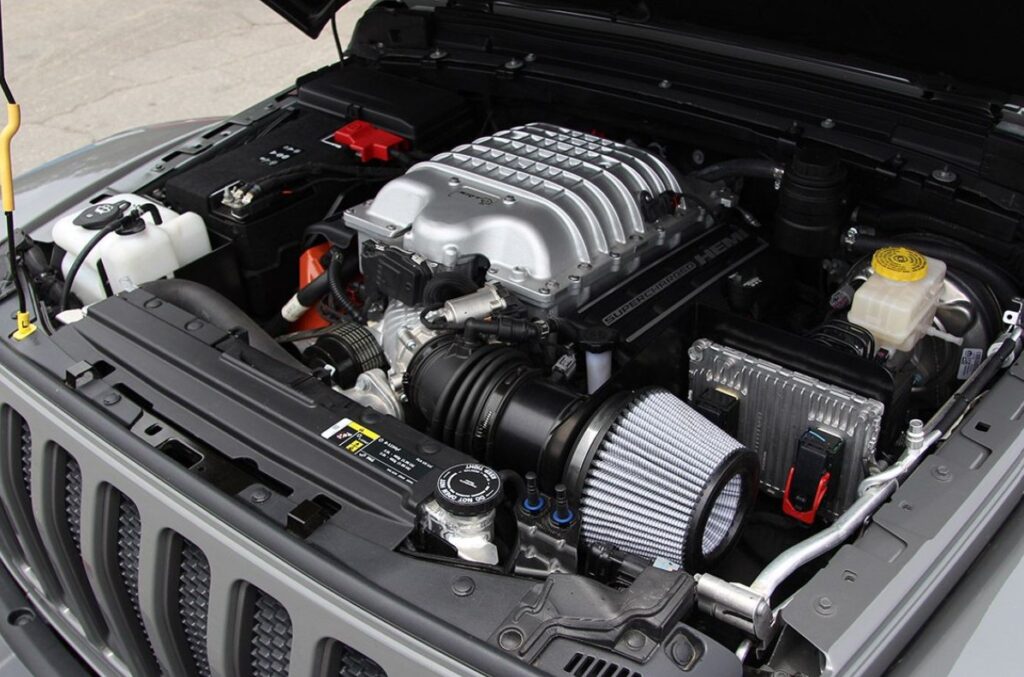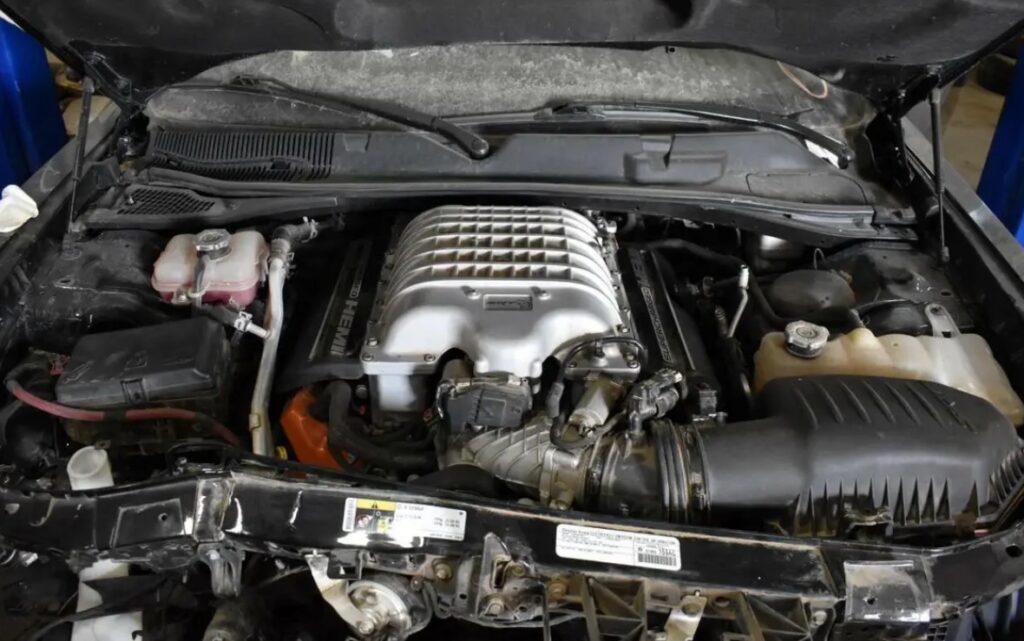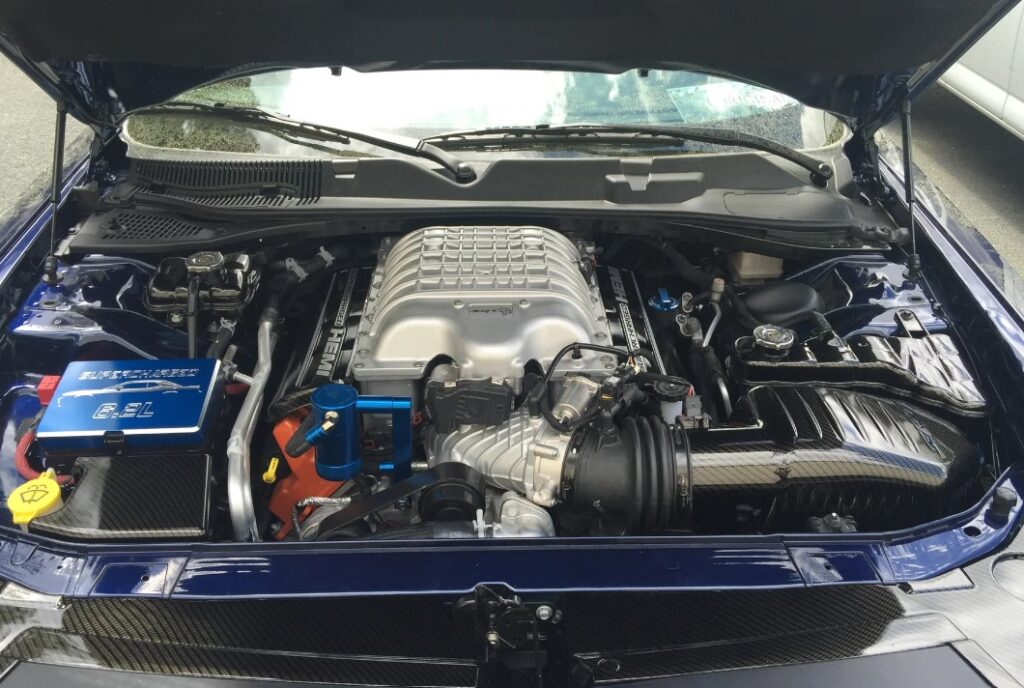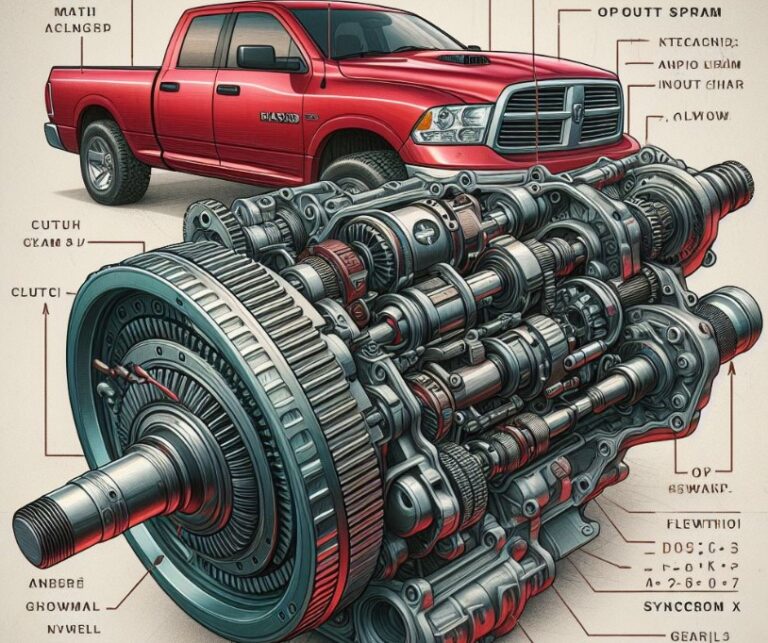How Much Does A Hellcat Engine Swap Cost? Answered
Are you looking for How Much Does A Hellcat Engine Swap Cost? The Hellcat engine swap is an exhilarating upgrade for car enthusiasts. It’s a process that involves replacing a vehicle’s existing engine with a high-performance Hellcat engine.
The Hellcat, renowned for its incredible power and efficiency, is a popular choice among those seeking to enhance their vehicle’s performance. In this article, we’ll explore the various aspects that contribute to the cost of a Hellcat engine swap, offering a comprehensive guide for those considering this modification.
Key Takeaways
- The cost of a Hellcat engine swap varies based on several factors.
- It includes the price of the engine, labor costs, and additional modifications.
- The complexity and customization level impact the final cost.
- Professional installation is recommended for optimal performance.
How Much Does A Hellcat Engine Swap Cost?
A Hellcat engine swap typically costs between $20,000 to $25,000. This estimate includes the cost of the Hellcat engine itself, which can range from $10,000 to $20,000, along with necessary additional components, and installation labor.

However, depending on various factors such as vehicle type, modifications required, and the mechanic’s expertise, the total cost can rise to around $25,000 to $40,000.
Understanding the Cost Factors of a Hellcat Engine Swap
The cost of a Hellcat engine swap involves several components. Each aspect contributes to the overall expense, and understanding these can help in budgeting and planning.
Price of the Hellcat Engine
- New vs. Used: New engines are more expensive but offer reliability and warranty. Used engines might be cheaper but come with risks.
- Source: Prices vary based on whether you’re buying from a dealer, a salvage yard, or a private seller.
Labor Costs for Engine Swap
- Expertise Required: Specialized skills are needed for a successful swap.
- Hourly Rates: These rates vary widely depending on the region and the mechanic’s expertise.
Additional Modifications and Parts
- Customization Needs: Custom parts like exhaust systems, cooling systems, and transmission upgrades add to the cost.
- Compatibility Adjustments: Ensuring the Hellcat engine fits and functions well in your vehicle might require additional modifications.
Comparative Analysis of Hellcat Engine Swap Costs
A detailed comparison of costs based on different scenarios can help in making an informed decision.

Cost Breakdown by Vehicle Type
- Sports Cars vs. Sedans: The cost can vary significantly based on the type of vehicle undergoing the swap.
- Older Models vs. Newer Models: Older models might require more modifications, thus increasing the cost.
Geographic Variation in Costs
- Regional Differences: Labor costs and part availability vary by region, affecting the overall expense.
DIY vs. Professional Installation
Considering whether to undertake the swap as a DIY project or to seek professional help is crucial.
Pros and Cons of DIY Installation
- Cost Savings: DIY can reduce labor costs but might lead to higher expenses in case of errors.
- Skill Level Required: A high level of mechanical skill and knowledge is necessary for a successful DIY swap.
Benefits of Professional Installation
- Expertise: Professionals have the experience and tools to ensure a quality installation.
- Warranty and Reliability: Professional installations often come with a warranty, offering peace of mind.
Timeline and Process of a Hellcat Engine Swap
Understanding the timeline and the steps involved can help in planning and managing expectations.

Stages of the Engine Swap
- Preparation: This includes sourcing the engine and parts, and preparing the vehicle.
- Installation: The actual process of removing the old engine and installing the Hellcat engine.
Estimated Time for Completion
- Duration: The time required can vary based on the complexity of the swap and the level of customization.
Real-World Examples and Case Studies
Examining real-world examples provides valuable insights into the actual costs and challenges faced during a Hellcat engine swap.
Success Stories
- Case Studies: Detailed accounts of successful Hellcat engine swaps, highlighting the costs, challenges, and outcomes.
Challenges and Solutions
- Common Hurdles: Identifying typical challenges faced during the process and how they were overcome.
Evaluating the Long-term Value of a Hellcat Engine Swap
The Hellcat engine swap is not just an initial investment; it also affects the vehicle’s long-term value and performance. Understanding these aspects is crucial for making a well-informed decision.

Impact on Vehicle’s Resale Value
- Enhanced Appeal: Vehicles with a Hellcat engine often attract a niche market of performance enthusiasts, potentially increasing resale value.
- Market Variability: However, the increased value is not guaranteed, as it depends on market trends and buyer preferences.
Maintenance and Upkeep Costs
- Regular Maintenance: The high-performance nature of the Hellcat engine necessitates regular, often more expensive, maintenance.
- Specialized Care: Owners might need to seek mechanics with specific expertise in high-performance engines, which could add to the maintenance costs.
Insurance and Legal Considerations
Swapping to a Hellcat engine can have implications on insurance and legality, which are important to consider before proceeding with the swap.
Insurance Implications
- Higher Premiums: Insurance companies often charge higher premiums for vehicles with high-performance engines like the Hellcat due to increased risk.
- Disclosure Requirements: It’s essential to inform your insurance company about the swap to avoid issues with claims.
Legal and Compliance Issues
- Emissions and Regulations: Ensuring the swapped vehicle meets state and federal emissions standards is crucial to avoid legal issues.
- Vehicle Registration: In some regions, engine swaps must be declared and approved for the vehicle to be legally drivable.
Performance and Efficiency Post-Swap
The performance boost from a Hellcat engine is significant, but it’s important to understand the implications on efficiency and drivability.

Enhanced Performance Metrics
- Power and Speed: The Hellcat engine dramatically increases horsepower and torque, offering an unparalleled driving experience.
- Handling and Drivability: The increased power may require additional modifications to the vehicle’s suspension and brakes for optimal handling and safety.
Fuel Efficiency and Emissions
- Fuel Consumption: The powerful Hellcat engine typically consumes more fuel, leading to lower fuel efficiency.
- Emissions Output: Owners should be aware of the potential increase in emissions, which might affect the vehicle’s environmental footprint.
Customization and Personalization Options
A Hellcat engine swap opens up a world of customization possibilities, allowing owners to tailor their vehicles to their specific preferences.
Aesthetic Customizations
- Exterior Modifications: Owners often choose to complement the engine swap with exterior modifications like custom paint jobs, body kits, and unique wheel designs.
- Interior Upgrades: Enhancing the interior with high-quality materials, racing seats, or advanced technology can further personalize the vehicle.
Performance Enhancements
- Tuning and Optimization: Beyond the engine swap, further tuning and performance enhancements can maximize the Hellcat engine’s potential.
- Suspension and Brake Upgrades: To handle the increased power, upgrading the suspension and braking systems is often necessary.
Community and Support for Hellcat Engine Swaps
The Hellcat engine swap community is a valuable resource for anyone considering this modification, offering support, advice, and shared experiences.
Online Forums and Social Media Groups
- Shared Knowledge: Online communities provide a wealth of information, from technical advice to recommendations on parts and mechanics.
- Networking Opportunities: Engaging with fellow enthusiasts can lead to valuable connections and insights into the world of performance vehicle modifications.
Local Clubs and Meetups
- Hands-On Experience: Local clubs and meetups offer opportunities to see and learn about Hellcat engine swaps firsthand.
- Community Support: These gatherings are a great way to gain support and advice from people who have already gone through the process.
How Much Would It Cost To Install A Hellcat Engine?
Installing a Hellcat engine is a significant investment, often driven by a passion for high-performance vehicles. The cost of a Hellcat engine swap typically ranges from $20,000 to $25,000. This estimate includes the cost of the engine itself and other necessary components, along with installation labor.

It’s crucial to understand that a Hellcat engine swap is not a straightforward process. Additional necessary components often include a new transmission, upgraded brakes, suspension upgrades, and more.
Labor costs can significantly affect the total expense, potentially amounting to $10,000 or more, depending on the swap’s complexity and the mechanic’s experience level. It’s also essential to budget for unexpected expenses, such as wiring and tuning costs.
The overall cost can vary depending on various factors, including the type of car, location, and the level of modification required. If opting for higher-end parts and modifications or outsourcing the entire project, costs can escalate further.
How Much Does The Hellcat Engine Cost?
The price of the Hellcat engine itself is a substantial part of the total cost of the engine swap. As of recent data, a new Mopar Hellcat crate engine is priced at $17,925. This engine, boasting 707 horsepower, is a supercharged powerhouse that can significantly enhance a vehicle’s performance.
Another source lists the Hellcat engine at approximately $19,530, with an additional kit that costs around $2,195. Purchasing the engine and kit together often comes with a warranty, which can be a valuable addition to such a significant investment.
It’s important to note that these prices are subject to change based on market conditions and availability. The cost of the engine can also vary based on whether it’s purchased new, used, or as part of a complete swap kit. Each option has its advantages and considerations, such as warranty, reliability, and the included components.
What Is Needed To Do A Hellcat Swap?
Undertaking a Hellcat engine swap requires more than just the engine itself. While specific requirements can vary based on the vehicle receiving the swap, there are some general components and considerations that are typically involved:

- Hellcat Engine: The centerpiece of the swap, a Hellcat engine, is a supercharged 6.2-liter V8 engine renowned for its power output.
- Transmission: An upgraded transmission that can handle the increased power and torque of the Hellcat engine is often necessary.
- Suspension Upgrades: To manage the added power and ensure vehicle stability, suspension upgrades are usually required.
- Brake Upgrades: Enhanced braking systems are crucial for safety, considering the increased performance capabilities.
- Cooling System: A more robust cooling system to handle the increased heat generated by the Hellcat engine.
- Fuel System Upgrades: Modifications to the fuel system to ensure adequate fuel delivery to the more powerful engine.
- Exhaust System: An upgraded exhaust system is often needed to accommodate the increased engine output.
- Electrical and Wiring Adjustments: Modifications to the vehicle’s electrical system and custom wiring work may be required.
- Engine Mounts and Adapters: Specific mounts and adapters to fit the Hellcat engine into the host vehicle.
- Custom Fabrication: Depending on the vehicle, custom fabrication might be needed for parts like the chassis or engine bay to accommodate the new engine.
Each Hellcat swap is unique, and the specific needs can vary based on the vehicle being modified. It’s important to consult with a professional who has experience with such swaps to ensure all necessary components are considered and properly installed.
Cost To Do A Hemi 5.7 Or 6.4 Swap In A Jeep Gladiator?
The cost of performing a Hemi 5.7 or 6.4 swap in a Jeep Gladiator can vary based on several factors, including the choice of engine, the complexity of the swap, and the installer’s charges.
- 6.4L HEMI Conversion: The cost for a 6.4L HEMI conversion in a Jeep Gladiator is estimated to be around $35,000 or more. For example, MMX4x4 offers a turnkey installation of the 6.4L HEMI V8 for $37,995, which includes everything from installation to custom dyno tuning.
- 5.7L HEMI Swap: The cost for a 5.7L HEMI swap can vary, but it’s generally considered to be cheaper than the 6.4L due to the lower engine cost. The manual swap reuses the existing transmission but replaces the clutch assembly, while an automatic swap would require a new transmission. The overall labor time for both swaps is roughly equal.
The prices for these swaps can vary based on the specifics of the installation and any additional modifications or customizations requested. It’s important to note that these are estimated costs, and actual prices may vary based on the installer and geographic location.
Conclusion
In conclusion, a Hellcat engine swap can significantly enhance a vehicle’s performance, but it comes with a substantial cost. The decision to undertake this modification should be based on a thorough understanding of the involved expenses, the required expertise, and the expected outcomes. Whether for a passion project or performance enhancement, a Hellcat engine swap is an investment that demands careful consideration and planning.
Frequently Asked Questions
Can any car have a Hellcat engine swap?
Technically, many cars can undergo a Hellcat engine swap, but the feasibility depends on the vehicle’s size, structure, and existing components. Larger vehicles with more space under the hood, like trucks and some sedans, are generally more suitable for such swaps.
How much horsepower does a Hellcat engine add?
A Hellcat engine typically delivers around 707 horsepower, significantly boosting the performance of any vehicle it’s installed in. However, the final horsepower can vary depending on additional modifications and tuning.
What are the most common vehicles for a Hellcat engine swap?
Popular vehicles for Hellcat swaps include older Dodge models, Jeeps (like the Wrangler), and even classic muscle cars. The choice often depends on the owner’s preference and the compatibility of the vehicle.
How long does it take to complete a Hellcat engine swap?
The time frame for a Hellcat engine swap can vary widely, from a few weeks to several months. This duration depends on factors like the complexity of the swap, the availability of parts, and the expertise of the mechanic.
What are the legal considerations for a Hellcat engine swap?
Legal considerations include ensuring the vehicle meets emission standards and is compliant with local and federal regulations. It’s also important to update the vehicle registration to reflect the new engine.

Welcome to the exhilarating world of Matt Rex, a professional car racer turned renowned vehicle enthusiast. Immerse yourself in his captivating blog as he shares heart-pounding adventures, expert reviews, and valuable insights on cars, trucks, jets, and more. Fuel your passion for speed and discover the beauty of vehicles through Matt’s engaging stories and meticulous expertise. Join the ever-growing community of enthusiasts who find inspiration and expert advice in Matt Rex’s blog—a digital hub where the thrill of speed meets the pursuit of knowledge.







